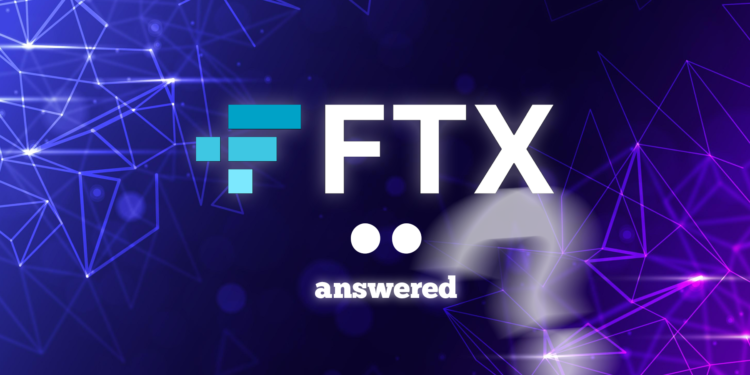Last updated on January 13th, 2025 at 05:25 am
Sam Bankman-Fried, once hailed as a crypto visionary, has been sentenced to 25 years in prison for his role in the massive fraud at the now-defunct crypto exchange FTX. His sentencing, however, concludes only a chapter in what has gone down as one of the greatest collapses in financial history. The FTX story doesn’t end here.
The fates of its customers, clients, and investors are still unfolding, with many questions remaining unanswered.
In this article, we aim to address some of these pressing questions surrounding the FTX scandal, its far-reaching consequences, and the ongoing efforts to recover lost funds. Let’s get to it.
What is the current situation of FTX?
Since filing for bankruptcy in November 2022, FTX has been embroiled in complex legal battles, regulatory probes, and criminal investigations involving its executives and the recovery of its assets. These assets, both digital and liquid, are estimated to be worth billions of dollars. However, locating and recovering these assets has proven to be a daunting task for the court-appointed management team.
The team, led by John Ray III, who also oversaw Enron’s bankruptcy, has noted that it is focused on liquidating FTX’s assets to repay customers whose cryptocurrency deposits were locked when the company filed for bankruptcy.
 How big was the FTX scandal?
How big was the FTX scandal?
The FTX scandal has proven to be a history-defining moment for the cryptocurrency sector. The crypto exchange was the third-largest in the world–it was valued at $32 billion at the time—when it filed for bankruptcy protection after it experienced the crypto equivalent of a bank run.
The ripple effects of FTX’s collapse have been felt far and wide, affecting not only individual investors but also institutional players and companies within the crypto ecosystem. Major firms like BlockFi, Galois Capital, and Genesis Global Trading suffered significant losses due to their exposure to FTX. BlockFi filed for bankruptcy two weeks after FTX’s collapse, and Genesis followed two months later, owing creditors nearly $3.4 billion.
The traditional financial system also faced liquidity issues; the SVB and Silvergate debacles in early 2023 can be traced back to FTX’s collapse in 2022.
 How much did FTX owe customers?
How much did FTX owe customers?
According to the bankruptcy team’s report, FTX owed customers and non-governmental creditors an estimated $11 billion in total. The report noted that FTX owed its over 1 million customers worldwide an estimated $8.7 billion at the time of its collapse.
Where did all of FTX’s money go?
The bankruptcy team’s report alleges that FTX’s previous management, including founder Sam Bankman-Fried, misappropriated customer funds for speculative trading, venture investments, acquisitions, political and charitable donations, and luxury real estate purchases in the Bahamas. The report accuses them of lying to banks, auditors, and executing false documents to enable and conceal their wrongdoing.
According to the team, the extensive commingling of funds and the lack of proper accounting and controls under Bankman-Fried’s management have made it extremely challenging to trace and recover the exchange’s assets.
How Much of FTX’s Money and Assets Have Been Recovered So Far?
As of April 2023, the bankruptcy team have reportedly recovered around $7 billion in cash and liquid crypto assets. According to the team’s reports, it expects further recoveries and the exchange might have over US$16.3 billion in cash to distribute once it’s sold all its assets.
The team noted that they were able to recover funds by selling a collection of assets that mostly consisted of proprietary investments held by the Alameda or FTX Ventures businesses. The sale of its $884 million stake in AI company Anthropic is an example of this. Notably, the recent rise in crypto prices contributed to the high recovery figures as some of the exchange’s assets were able to fetch more value than they could at the time of its collapse.
What About the Clawback Cases?
Another way the team is trying to recover the exchange’s assets is via litigation claims against companies and institutions that owed or received funds from the exchange’s management before its collapse. However, it has had little success with these clawback cases.
FTX and its management reportedly donated $93 million to political causes between March 2020 and November 2022. Some other recipients, such as New York’s Metropolitan Museum of Art and Stanford University, have returned their donations, but many have not.
 Is It True That FTX Customers Are Getting 100% of Their Money Back? How Is That Possible?
Is It True That FTX Customers Are Getting 100% of Their Money Back? How Is That Possible?
Yes, it is true that some customers will be getting 100% of their funds stuck in the exchange and even more. The team managing the bankrupt exchange recently stated that they have found a way—recovered enough assets—to pay customers what they are owed in full, including interest of over 9%.
Customers and creditors claiming $50,000 or less are expected to receive about 118% of their claims, covering approximately 98% of FTX customers. Notably, their repayment will be calculated based on cryptocurrency prices from November 2022. The bankruptcy team has stated that customers should not expect quick repayment, because the company still needs to investigate which customer claims are legitimate.
The team has also reached agreements with various government regulators, who have agreed to wait until customers are fully repaid before attempting to collect on about $9 billion in claims. However, the IRS will receive $200 million upfront before anyone else gets a slice.
Why Are FTX Creditors And Customers Unsatisfied With The Repayment Plan?
Some creditors and former customers are unhappy with the repayment plan because it values their cryptocurrency holdings based on November 2022 prices, when the crypto market was experiencing a prolonged slump.
Since crypto prices have surged, these customers feel they are not getting fair value by using the lower November 2022 valuations. For context, Bitcoin has hit a new ATH and is currently trading at $71,115 from its November 2022 price of $16,872.
The creditors argue that their claims have been undervalued, and the current plan is seen as deceptive and insulting. A group of aggrieved creditors started forming a voting block in January 2024, which now has over 1,600 members. This group plans to vote in June on whether to accept 118% of their lost funds. The bankruptcy court is scheduled to hold a hearing on the distribution of FTX assets on June 25.
What Happens to FTX Investors?
Shareholders and investors in FTX are unlikely to recover their investments. According to John Ray III, after settling customers, there will be little left to distribute to this group of creditors, which includes both institutional and retail investors, celebrities, and influential persons.
Institutions like Tiger Global Management, Ontario Teachers’ Pension Plan, BlackRock, Lightspeed Venture Partners, and Sequoia Capital, as well as public figures like Tom Brady and Gisele Bündchen, have significant investments in FTX that are now assumed to be worthless.
Sequoia Capital reportedly wrote down its stake worth about $214 million in the exchange to $0 in November 2022 and assured its investors that it only represented a fraction of their portfolio.
 What Happened to Caroline Ellison and Other FTX Executives?
What Happened to Caroline Ellison and Other FTX Executives?
Caroline Ellison, Bankman-Fried’s ex-girlfriend and an early recruit into his crypto enterprise, agreed to a plea deal in December 2022. Notably, Ellison provided testimony, text messages, documents, and secret recordings that helped lead to Bankman-Fried’s conviction on fraud charges. Also, as a part of her plea deal, she agreed to make restitution of an amount to be decided by the courts.
Gary Wang and Nishad Singh, the other executives implicated in the suits, have also pleaded guilty to defrauding FTX customers and related charges. Both also gave testimony that contributed to Bankman-Fried’s conviction.
On the other hand, Ryan Salame, another FTX executive, was recently sentenced to seven and a half years in prison, followed by three years of supervised release. Salame has also been ordered to pay more than $6 million in forfeiture and more than $5 million in restitution. Notably, Salame did not take the stand during Bankman-Fried’s trial.
Ellison, Wang, and Singh face maximum prison sentences of 110 years, 50 years, and 75 years respectively. However, their plea deals would see them get drastically reduced sentences.
Is FTX still working? Will FTX still work?
No, FTX is no longer operational. Though trading on the platform was initially possible after its bankruptcy filing, the exchange has effectively ceased operations.
Also, the efforts to restart it are effectively abandoned. The bankruptcy team noted that it opted for liquidation instead of restarting the exchange, as no potential bidders or investors were willing to provide enough funding to rebuild it.
In early 2023, Ray III reportedly said that he had formed a task force to explore reviving FTX.com, the crypto exchange. However, at a recent court hearing, FTX attorney Andy Dietderich reportedly stated that FTX was never what it appeared to be, and Bankman-Fried never built the underlying technology or administration necessary to run the company as a viable business. According to Dietderich, “the costs and risks of creating a viable exchange from what Mr. Bankman-Fried left in a dumpster were simply too high.”
Disclaimer: This article is intended solely for informational purposes and should not be considered trading or investment advice. Nothing herein should be construed as financial, legal, or tax advice. Trading or investing in cryptocurrencies carries a considerable risk of financial loss. Always conduct due diligence.
If you would like to read more articles (news reports, market analyses) like this, visit DeFi Planet and follow us on Twitter, LinkedIn, Facebook, Instagram, and CoinMarketCap Community.
“Take control of your crypto portfolio with MARKETS PRO, DeFi Planet’s suite of analytics tools.”





















